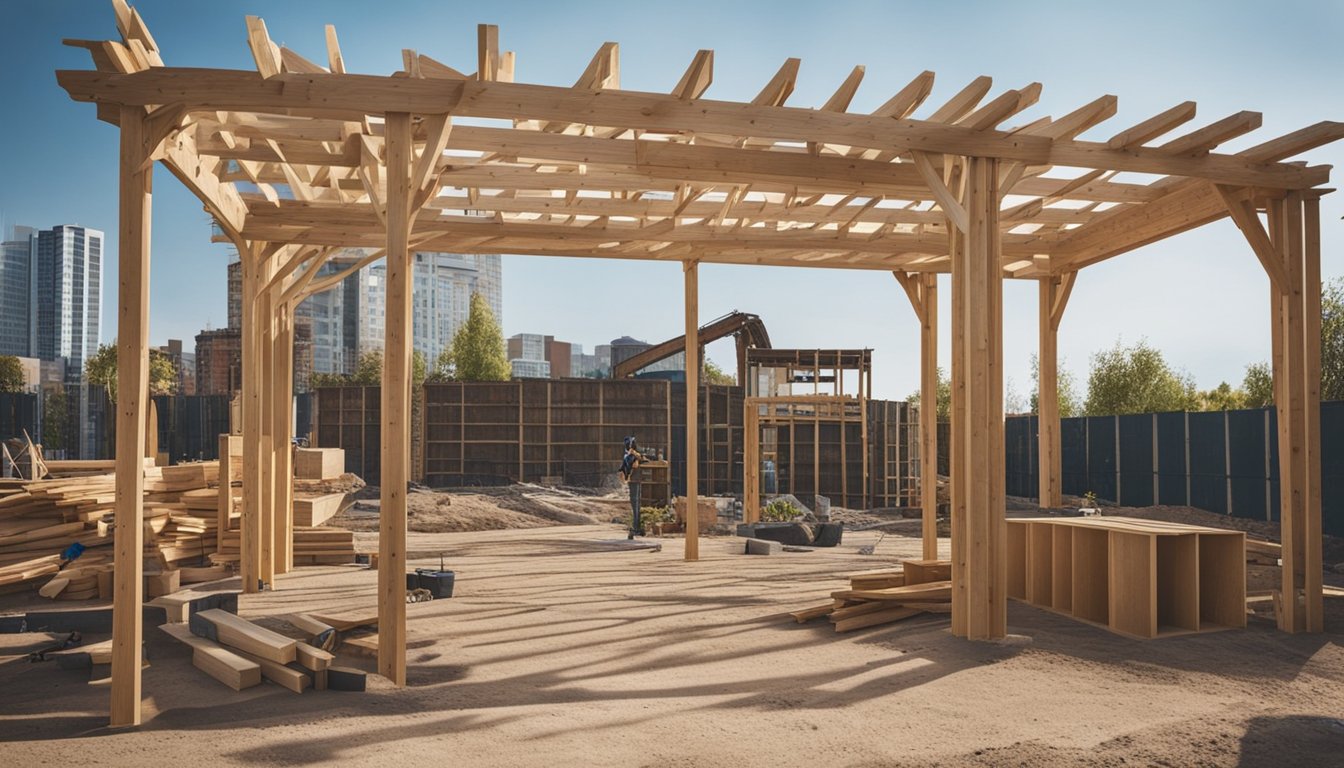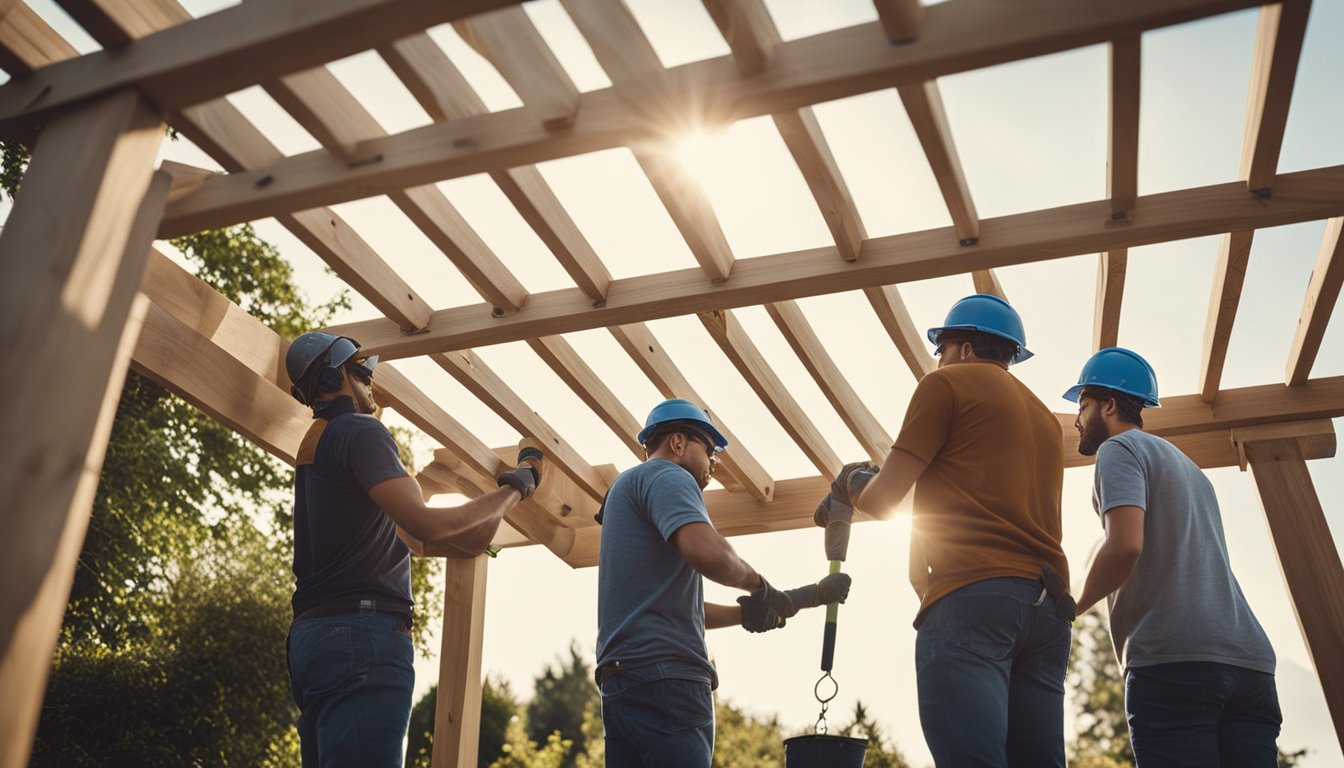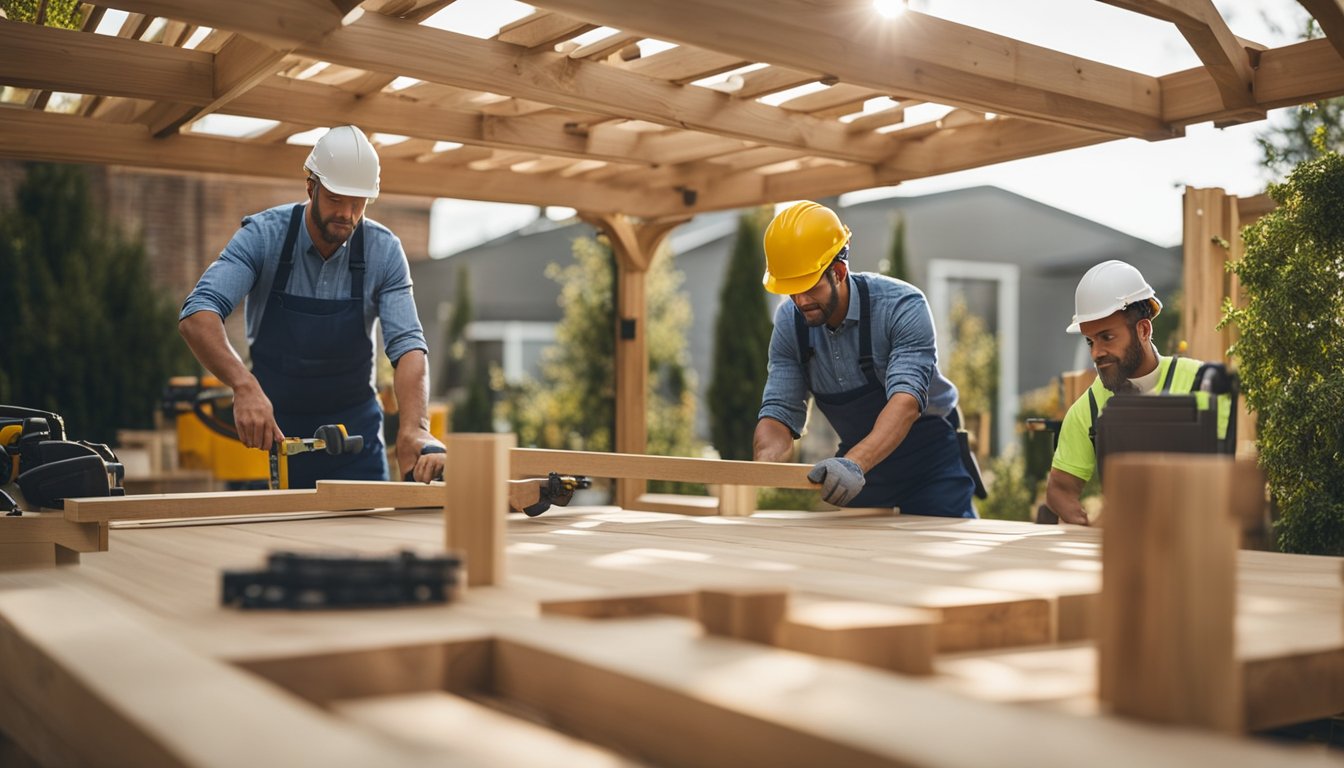Pergola Construction: Essential Steps for a Stylish Outdoor Addition
A pergola can transform your backyard into a stunning outdoor retreat. This open-air structure adds charm and function to your yard, creating a perfect spot for relaxation or entertaining. With its vertical posts and crossbeam roof, a pergola defines space while allowing sunlight and fresh air to flow through.

Building a pergola is a rewarding DIY project that can enhance your landscaping. You can construct a pergola using pressure-treated lumber, concrete, and basic tools. The process involves setting posts, attaching beams, and adding rafters for the roof. With some planning and effort, you can complete this project in a weekend.
A well-designed pergola can increase your home’s value and expand your living area. It provides a focal point for your outdoor space and can support climbing plants for added beauty. Whether you want shade, privacy, or simply a place to hang string lights, a pergola offers versatility to suit your needs.
Planning Your Pergola
A well-planned pergola adds beauty and function to your outdoor space. It’s important to choose the right spot and materials for your project.
Choosing the Location
Pick a spot that fits your needs and complements your yard. A pergola can work on a patio, deck, or in the garden. Think about sun and shade patterns throughout the day. You might want morning sun but afternoon shade.
Consider views from inside your home and privacy from neighbours. Make sure there’s enough space around the pergola for walking and furniture. Check local building codes and homeowner association rules before you start.
Measure the area carefully. A typical pergola is 10 feet by 10 feet, but you can adjust the size to fit your space. Leave at least 2 feet of clearance on all sides for easy movement.
Selecting Materials
Choose materials that match your style and budget. Wood is popular for its natural look. Cedar and redwood are good choices because they resist rot and insects. Pressure-treated lumber is cheaper but may warp over time.
Aluminum pergolas are low-maintenance and don’t rust. They come in many colors and styles. Vinyl is another durable option that doesn’t need painting.
Consider the pergola’s design. Do you want a classic look with straight lines or a more ornate style? Think about the roof. Solid roofs offer more shade, while open lattice lets in more light.
Don’t forget about hardware. Use rust-resistant bolts and screws for longer-lasting construction. Factor in the cost of concrete for securing posts if you’re building on the ground.
Designing Your Pergola
A well-designed pergola can transform your outdoor space. The right dimensions, style, shade, and plants work together to create a stunning focal point for your yard.
Customizing Dimensions and Style
Your pergola’s size depends on its purpose and available space. A typical pergola measures 10 feet by 10 feet, but you can adjust this to fit your needs. Height usually ranges from 8 to 12 feet.
Choose a style that matches your home’s architecture. Traditional pergolas often feature ornate posts and curved beams. Modern designs lean towards clean lines and minimalist aesthetics.
Materials matter too. Wood is classic and versatile. Cedar and redwood resist rot naturally. Pressure-treated pine is budget-friendly but needs regular maintenance.
Consider the roof design. Open slats let in more light, while closer spacing provides more shade. Lattice tops add visual interest and support for climbing plants.
Incorporating Shade and Plants
Pergolas offer a perfect balance of sun and shade. You can control light levels by adjusting the spacing of roof slats or adding a retractable canopy.
Climbing plants can turn your pergola into a living garden arbor. Fast-growing vines like wisteria or jasmine create natural shade and add fragrance.
For year-round greenery, try evergreen vines. They provide consistent coverage and protection from the elements.
Add hanging baskets or planter boxes to bring more color to your pergola. These allow you to change plants seasonally for a fresh look.
Remember to leave enough space between plants and wood to prevent rot. Good air circulation keeps your pergola cool and extends its lifespan.
Building the Pergola

Building a pergola involves setting a solid foundation, assembling the main structure, and adding final touches. This project requires careful planning and the right tools to create a beautiful outdoor space.
Setting Up the Foundation
Start by marking the pergola’s footprint. Dig post holes at least 2 feet deep or below the frost line. Place wooden posts in the holes and fill with concrete. Use a level to ensure posts are straight.
For a freestanding pergola, you’ll need at least four posts. Measure carefully and double-check distances between posts. Allow concrete to cure fully before moving on.
If building on a stone patio, use post anchors instead of digging holes. Secure anchors to the patio surface with strong bolts.
Assembling the Structure
Cut lumber to size for beams and rafters. Use a circular saw for straight cuts and a jigsaw for any decorative end cuts. Attach support beams to the tops of posts using bolts or strong screws.
Place rafters across support beams. Space them evenly, typically 12-16 inches apart. Secure with nails or screws. Add cross braces for extra stability if needed.
For the roof, attach smaller boards perpendicular to the rafters. This creates a lattice effect and provides partial shade.
Final Touches and Maintenance
Sand all wooden surfaces to prevent splinters. Apply wood stain or sealant to protect from weather damage. Reapply every 1-2 years for best results.
Consider adding features like built-in benches or climbing plants for a cozy seating area. Ensure any additions don’t compromise the structure’s integrity.
Regularly check for loose fasteners or signs of wood rot. Tighten bolts and replace damaged wood promptly to keep your pergola safe and sturdy.
Customization and Accessories

Pergolas offer many options for customization. You can choose from different materials like wood or aluminum to match your style. Custom pergola designs provide a unique look for your outdoor space.
Add shade with retractable canopies or fixed roofs. These keep you cool on hot days. Louvered roofs let you adjust the amount of sunlight.
Plants and vines bring life to your pergola. Climbing roses or wisteria create a garden feel overhead. Hang planters from the beams for more greenery.
Create a cozy seating area underneath. Add benches, chairs, or even a swing. A fire pit nearby extends use into cooler evenings.
Lighting enhances the mood. String lights, lanterns, or built-in fixtures illuminate your space at night.
For privacy, add curtains or lattice panels to the sides. These also block wind and provide extra shade.
You can attach your pergola to your house or make it freestanding in the backyard. Each option offers different benefits for your outdoor living area.
Accessories like fans, speakers, or outdoor TVs add comfort and entertainment. With so many choices, you can design a pergola that fits your needs perfectly.
Frequently Asked Questions

Building a pergola involves important decisions about design, materials, and construction methods. Let’s explore some common questions to help you plan your project effectively.
What are the essential steps for building a pergola for beginners?
Start by designing your pergola and getting necessary permits. Choose your materials and prepare the site. Install support posts and secure them properly. Add beams and rafters to create the structure. Finish with any decorative elements or lattice.
What are the differences between building a freestanding pergola and one attached to a house?
Freestanding pergolas offer more flexibility in placement but require a separate foundation. Attached pergolas use the house for support, which can simplify construction. They also provide a seamless transition from indoor to outdoor spaces.
Can you outline the foundation requirements for a sturdy pergola?
For a solid foundation, use concrete footings that extend below the frost line. The size and depth depend on your pergola’s dimensions and local building codes. Deck foot anchors or concrete anchors can be used when building on an existing deck.
What materials are recommended for constructing a durable pergola?
Cedar, redwood, and pressure-treated pine are popular wood choices for their durability and resistance to decay. For longer-lasting structures, consider vinyl, fiberglass, or aluminum. These materials require less maintenance over time.
Do you need special permission or permits to construct a pergola?
Most areas require permits for pergola construction. Check with your local building department for specific requirements. You may need to submit plans and have inspections during the building process.
Is it more cost-effective to DIY a pergola or purchase a pre-made kit?
DIY pergolas can be more cost-effective if you have the necessary skills and tools. Pre-made kits offer convenience and can be easier for beginners. Compare material costs and your time investment to determine the best option for you.